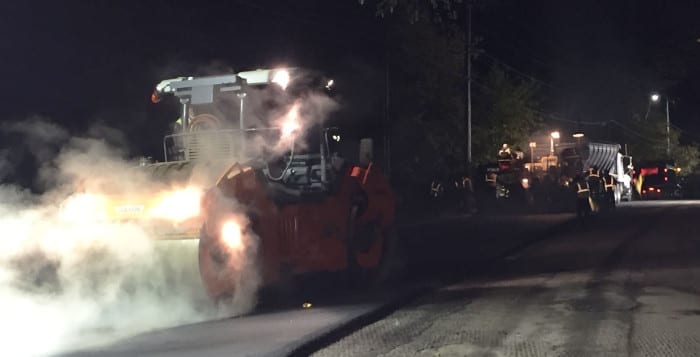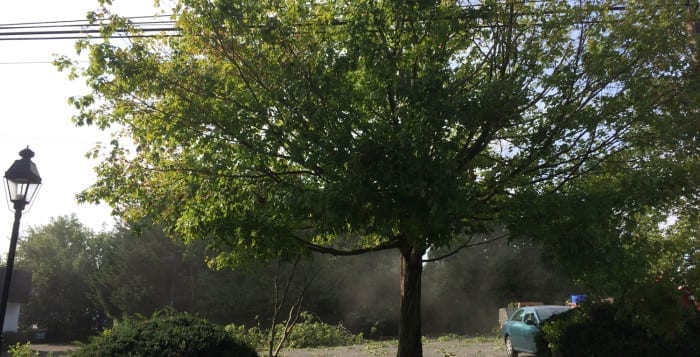December is approaching, but things are heating up on the streets of Setauket.
Brookhaven became the first municipality across Long Island to use a product known as warm mix asphalt during repaving projects, and with three paving seasons already under his belt, Brookhaven Highway Superintendent Dan Losquadro (R) said its implementation could not be smoother — literally.
“As the third largest Highway Department in all of New York state I felt it was important for Brookhaven to be both an innovator and a leader in introducing new technologies,” he said in a statement. “As we enter the latter part of the paving season, warm mix asphalt allows us to achieve proper compaction, especially during night work in cooler temperatures. I want to show other departments that not only is this product viable, it’s actually preferable in many instances.”
Warm mix asphalt production uses temperatures 30 to 120 degrees Fahrenheit lower than the traditional hot mix asphalt used in paving projects. The Highway Department said that greater temperature differences between asphalt mixes and the outside temperature makes for faster cooling for the mixes, which affects durability. With warm mix asphalt’s slower cooling time, it is most effective when used in lower temperatures, typically at night, Losquadro said.
The Highway Department entered into a new contract last year, which included new bid specifications calling for the technology, which Losquadro said provided more accountability and streamlined the paving process.
The technology has been used for more than a decade across the country, but did not hit the pavements of Suffolk County until last week in Setauket.
“Since it was first demonstrated in the US in 1996, warm mix asphalt has sparked the interest of transportation agencies and the private sector,” said Tom Harman, director of the Federal Highway Administration Center for Accelerating Innovation. “Warm mix asphalt technologies allow a reduction in asphalt production, flexibility when it comes to the temperatures needed for applying it and reduced production fuel consumption and emissions.”
It also extends the paving season and enables the use of higher recycled products, Harman said. In 2014, a third of all asphalt produced in the U.S. was warm mix asphalt, and “we expect use of the material to continue to grow in use.”
Over a two-night span last week, the department traveled the streets of Hulse Road to Comsewogue Road, and Comsewogue Road from the train tracks to Sheep Pasture Road to Old Town Road, Losquadro said.
By the end of the week, Losquadro said the streets of Setauket saw new life. The highway superintendent said it delivered a handful of benefits to the town right off the bat, including better working conditions for air quality and also reducing fuel emissions, fumes and odors.
“We achieved a very uniform surface with almost no roller marks or imperfections,” he said. “I wanted to pick the right time to test this out and have that proof of concept to use it in cooler temperatures. Now having done that, I see no reason why this can’t become our new standard for Brookhaven. I see a lot of benefits to us, both environmentally and from a work perspective.”
The cost, Losquadro said, is fairly minimal in difference from typical hot mix asphalt usage. The Setauket job saw a roughly 88-cent difference per ton of asphalt used, which amounted to about $4,400 more than what hot mix asphalt would have achieved.
“That’s pretty minimal in the grand scheme of the size of the jobs we’re talking about here,” Losquadro said. “The cost should be at least offset by the reduction in fuel that the manufacturer is going to save by not having to heat the material up as much.”
And with his proof of concept, Losquadro said he would be bringing his warm mix story to future meetings of various county highway departments with hopes of spreading the success.






